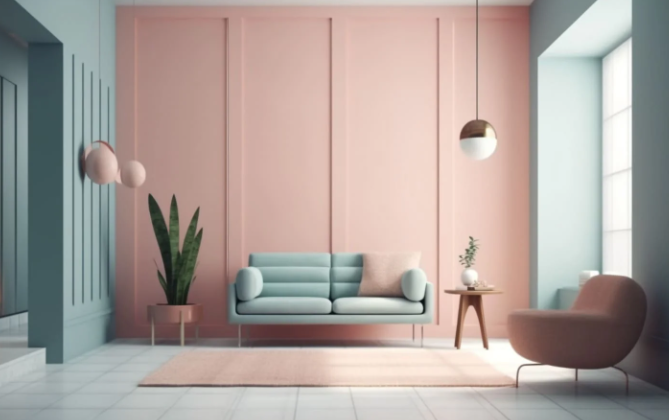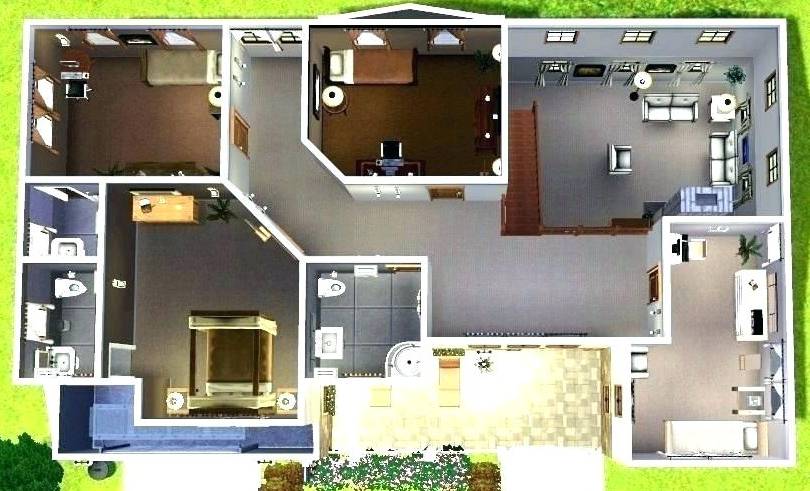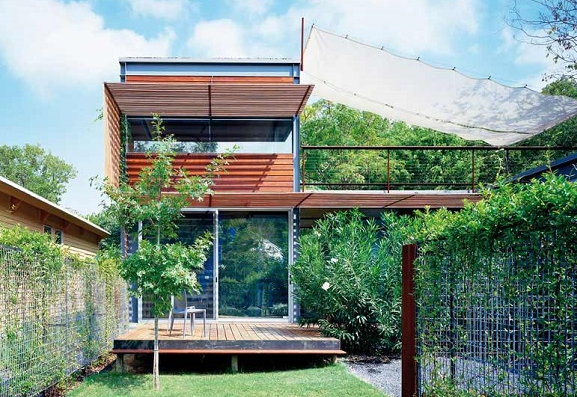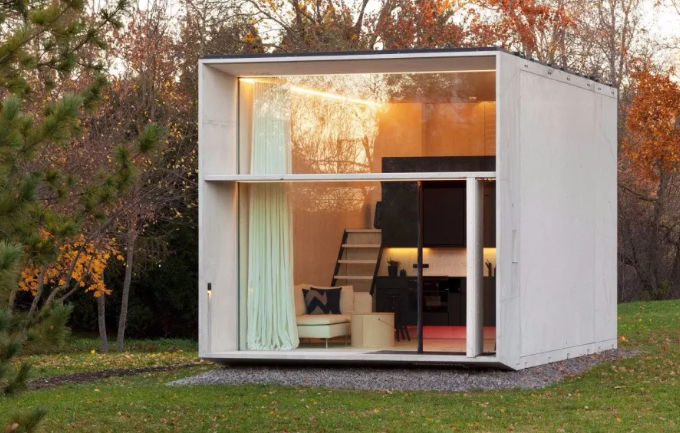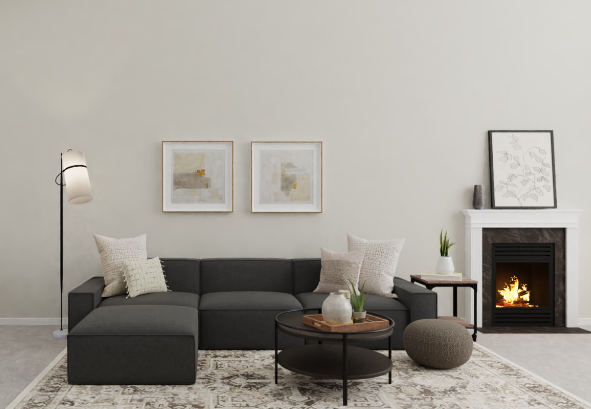Living in a small space doesn’t mean you have to sacrifice style or functionality. In fact, with the right decor hacks, you can transform a tiny area into a chic, comfortable, and highly functional home. Here are ten small space decor hacks that pack a big punch and make a significant impact on your living environment.
1. Utilize Multi-Functional Furniture 🛋️
Information: Multi-functional furniture is a game-changer for small spaces. Pieces like sofa beds, ottomans with storage, and fold-out desks help maximize your room’s utility without overcrowding it.
Pros:
- Space-saving: Offers dual purposes, reducing the need for additional furniture.
- Cost-effective: Reduces the number of items you need to buy.
- Versatile: Easily adapts to various needs and functions.
Cons:
- Cost: High-quality multi-functional furniture can be pricey.
- Design: Some options might not be as stylish as single-purpose pieces.
- Complexity: May be less intuitive to use compared to dedicated furniture.
Ideas:
- Sofa beds: Ideal for guests, these can double as a comfy couch by day and a bed by night.
- Storage ottomans: Perfect for stashing away blankets, books, or other small items.
- Fold-out desks: Great for working or studying in a compact area.
2. Embrace Vertical Storage 📚
Information: When floor space is limited, look upwards. Shelves, tall cabinets, and wall-mounted racks help you utilize vertical space effectively.
Pros:
- Maximizes Space: Uses wall area to store items, freeing up floor space.
- Organized: Keeps your belongings neatly stored and accessible.
- Customizable: Allows for creative and personalized storage solutions.
Cons:
- Accessibility: Items stored high up might be harder to reach.
- Installation: May require wall mounting and tools.
- Visual Clutter: Can look cluttered if not organized well.
Ideas:
- Wall-mounted shelves: Great for displaying books, plants, or decor items.
- Tall cabinets: Perfect for storing kitchenware or pantry items.
- Hanging racks: Use for storing kitchen utensils or bathroom essentials.
3. Opt for Light Colors and Mirrors 🪞
Information: Light colors and mirrors can make a small space appear larger and more open. White, beige, or pastel shades on walls and furniture reflect light, while mirrors add depth.
Pros:
- Brightens Space: Light colors and mirrors enhance natural light.
- Illusion of Space: Mirrors create the illusion of a larger area.
- Versatile: Fits various decor styles and can be easily changed.
Cons:
- Maintenance: Light colors may show dirt and wear quickly.
- Overuse: Too many mirrors might create a cluttered feel.
- Privacy: Mirrors can sometimes compromise privacy in certain areas.
Ideas:
- Light-colored walls: Opt for whites or soft hues to brighten up the space.
- Mirrored furniture: Adds a touch of elegance while reflecting light.
- Decorative mirrors: Use different shapes and sizes to create a focal point.
4. Incorporate Floating Furniture 🚪
Information: Floating furniture, such as floating desks or vanities, frees up floor space and gives a modern, airy feel. It also makes cleaning easier.
Pros:
- Space-saving: Provides extra floor space for movement.
- Modern Look: Adds a contemporary aesthetic.
- Easy to Clean: Simplifies floor maintenance.
Cons:
- Weight Limits: Might not support heavy items.
- Installation: Requires secure wall mounting.
- Limited Options: Fewer styles compared to traditional furniture.
Ideas:
- Floating desks: Ideal for a home office or study area.
- Floating vanities: Great for small bathrooms, adding style without bulk.
- Wall-mounted shelves: Offers space for books and decor without taking up floor space.
5. Create Optical Illusions with Rugs 🏠
Information: Rugs can define areas within a small space and create the illusion of separate zones. Choose rugs that complement your decor and make the space feel cohesive.
Pros:
- Defines Areas: Helps to segment different parts of a room.
- Comfort: Adds warmth and coziness to the space.
- Decorative: Enhances the aesthetic appeal.
Cons:
- Size Constraints: Small rugs might not fit larger areas well.
- Maintenance: Requires regular cleaning to avoid looking worn.
- Safety: Rugs can be a tripping hazard if not secured properly.
Ideas:
- Layered rugs: Use smaller rugs on top of larger ones to create texture and depth.
- Patterned rugs: Choose patterns that complement your furniture and decor.
- Rug pads: Add these to prevent slipping and extend rug life.
6. Use Foldable and Stackable Items 📦
Information: Foldable and stackable items are perfect for small spaces as they can be stored away when not in use. Chairs, tables, and storage boxes that fold or stack help you save space.
Pros:
- Space-efficient: Easy to store away when not needed.
- Flexible: Adapt to various needs and uses.
- Convenient: Simplifies storage and organization.
Cons:
- Durability: Foldable items might be less durable than their non-foldable counterparts.
- Design: May lack the aesthetic appeal of permanent fixtures.
- Comfort: Foldable furniture might be less comfortable or sturdy.
Ideas:
- Foldable chairs: Perfect for extra seating during gatherings.
- Stackable storage bins: Use for organizing clothes, toys, or office supplies.
- Compact tables: Ideal for small dining or work areas.
7. Incorporate Smart Technology 📱
Information: Smart technology can enhance functionality and convenience in small spaces. From smart lighting to automated home systems, these gadgets can optimize your living area.
Pros:
- Convenient: Allows for remote control and automation.
- Space-saving: Many smart devices are compact and unobtrusive.
- Energy-efficient: Smart systems can help reduce energy consumption.
Cons:
- Cost: High-tech gadgets can be expensive.
- Compatibility: Devices may not always integrate seamlessly.
- Privacy: Smart technology can pose privacy concerns if not secured.
Ideas:
- Smart lighting: Control lights with your smartphone or voice commands.
- Automated thermostats: Regulate temperature efficiently.
- Smart storage solutions: Use apps to track and manage storage spaces.
8. Maximize Closet Space 🧥
Information: Closet organizers, hanging racks, and shelf dividers can help you make the most of your closet space. Efficient closet organization prevents clutter and keeps everything in its place.
Pros:
- Organized: Keeps your belongings neatly arranged and accessible.
- Space-efficient: Uses closet space effectively.
- Customizable: Allows for tailored storage solutions.
Cons:
- Initial Setup: Requires time and effort to organize.
- Cost: Some organizers and solutions can be pricey.
- Maintenance: Needs regular upkeep to stay organized.
Ideas:
- Hanging organizers: Store shoes, accessories, or folded clothes.
- Shelf dividers: Keep stacks of clothes neat and tidy.
- Over-the-door racks: Ideal for small items like hats or bags.
9. Add Vertical Gardens 🌿
Information: Vertical gardens or wall planters are perfect for adding greenery without taking up floor space. They bring a touch of nature into your home and can be used as decor elements.
Pros:
- Space-saving: Utilizes wall space for plants.
- Decorative: Adds a natural and refreshing element.
- Air Quality: Improves indoor air quality.
Cons:
- Maintenance: Requires regular watering and care.
- Installation: Needs secure mounting to prevent falling.
- Light Needs: Plants might need specific lighting conditions.
Ideas:
- Wall-mounted planters: Ideal for herbs, succulents, or small plants.
- Hanging pots: Use ceiling hooks to create a floating garden.
- Vertical garden panels: Great for a dramatic and lush green wall.
10. Incorporate Hidden Storage Solutions 🏠
Information: Hidden storage, such as under-bed drawers or built-in compartments, helps keep clutter out of sight and makes your small space feel more organized and spacious.
Pros:
- Clutter-free: Keeps items out of view, reducing visual clutter.
- Space-efficient: Utilizes underutilized areas.
- Organized: Provides designated spaces for various items.
Cons:
- Accessibility: Hidden storage might be less accessible for frequently used items.
- Cost: Custom-built solutions can be expensive.
- Design: Might require redesigning existing furniture or spaces.
Ideas:
- Under-bed storage: Ideal for off-season clothing or extra linens.
- Built-in cabinets: Use space effectively around doors or windows.
